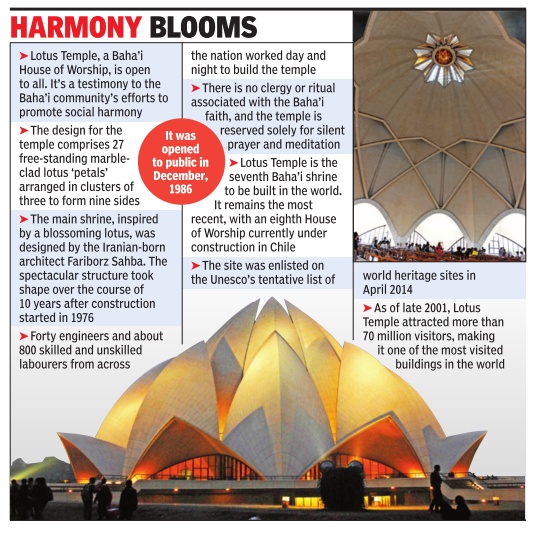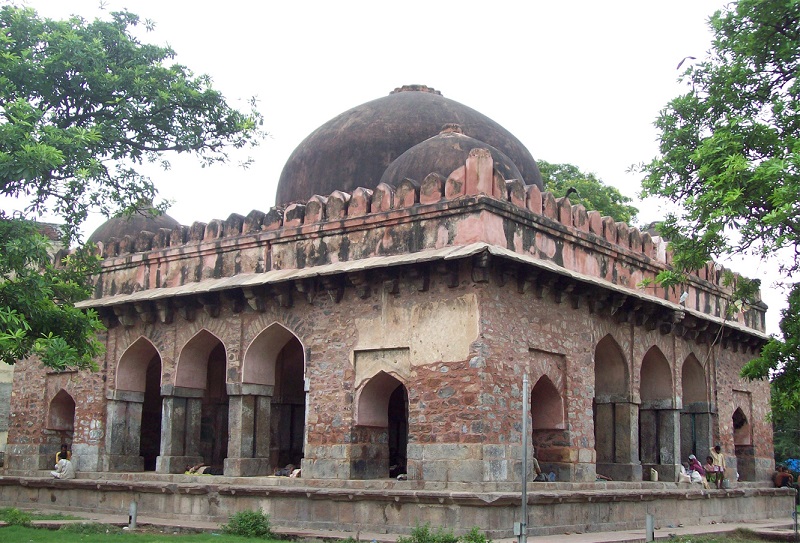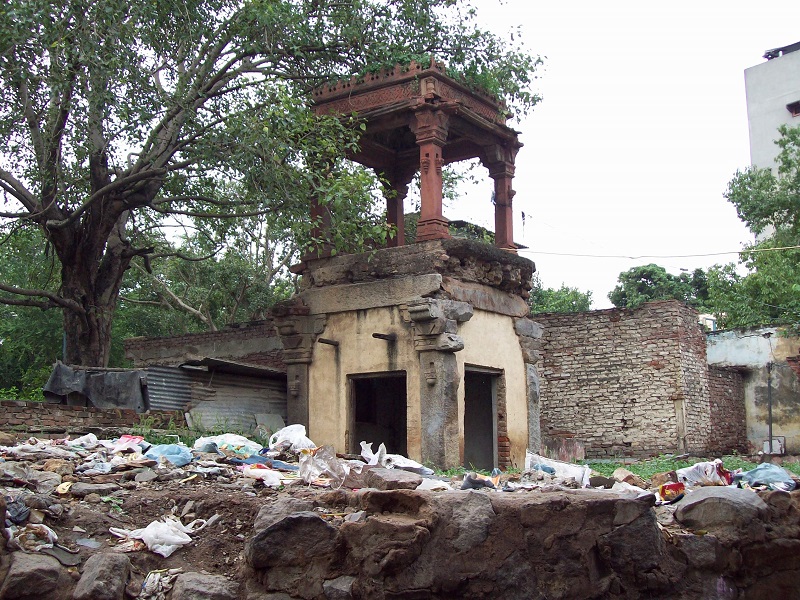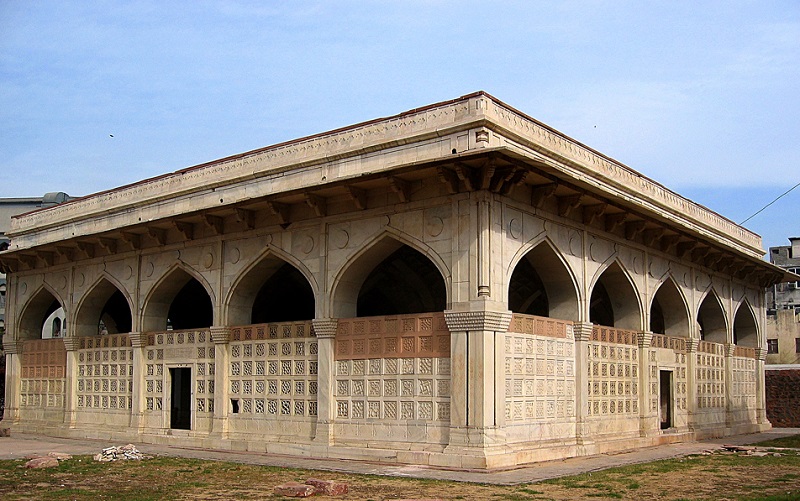Delhi: L
This is a collection of newspaper articles selected for the excellence of their content. |
Contents |
Lal Kot
Rana Safvi, October 29, 2017: The Hindu
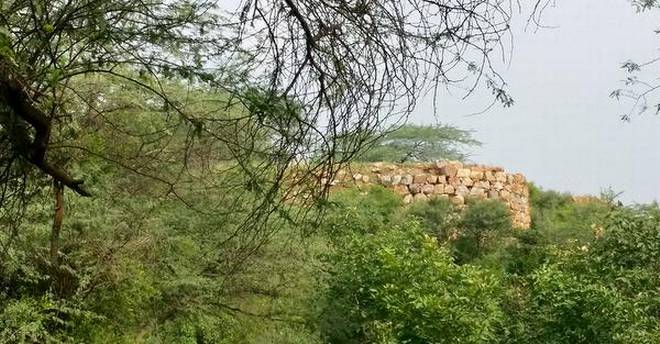
From: Rana Safvi, October 29, 2017: The Hindu
Lal Kot, built by Raja Anangpal Tomar, is not the same as Lal Qila
Delhi’s Red Fort, or Lal Qila, is not only an iconic structure but is synonymous with the city. However, much before the Lal Qila, there was another Red Fort in Delhi called Lal Kot, which was built by Anangpal Tomar in the eighth century. It is the original Red Fort of Delhi. Let me clarify that Lal Qila was not built on the ruins of Lal Kot; they are quite far away from each other.
History of Delhi
We have documented proof for the foundation of Delhi from the first Tomar king onwards. Raja Anangpal Tomar founded it in AD 736. He probably chose the rocky Aravalli hills in Mehrauli as his headquarters for the strategic and military advantages it offered. It was one of the reasons why Qutbuddin Aibak, the first Sultan of Delhi, and some of his successors continued to live in the Lal Kot/Qila Rai Pithaura area for some years till Kaikobad moved to Kilokhari.
Delhi was built over several years as successive rulers felt the need for fortification against enemies, or wanted to go closer to sources of water, or just wanted to create a magnificent city. The seven cities are still extant; the eighth city was designed and built by Edwin Lutyens.
The first city of Delhi — Lal Kot/Qila Rai Pithaura — is situated in Mehrauli. The seventh city of Shahjahanabad, where Lal Qila is situated, is 23 km away from Lal Kot. In between are the ruins of the five other extant cities: Siri, Jahanpanah, Tughlaqabad, Firozabad and Dinpanah/Sher Shah Garh.
The first city stretched from Lado Sarai to Mehrauli. Later this area was expanded and renamed Qila Rai Pithaura after the famous ruler Raja Prithviraj Chauhan (AD 1169-1191).
The Tomars ruled over it from AD 736 but it was Anangpal II who re-peopled it and built Delhi’s first Red Fort in AD 1052. It seems probable that Anangpal II was forced to move to Delhi from Kanauj after the attack by Mahmud of Ghazni on Kanauj. Here, the Tomar kings, Anangpal and his successors, reigned undisturbed for a century, during which time they were able to build the city walls and construct masonry, dams, and tanks.
Basheeruddin Ahmed in Waqeat-e-Darul Hukumat Dehli and Gordon Risley Hearns in The Seven Cities of Delhi refer to an invasion and conquest of Delhi by Chauhan Rajputs in AD 1151 after which they reached an arrangement that the Tomar should marry a Chauhan princess so that their offspring becomes the king of Delhi.
That son was Prithviraj. He fortified the walls of his grandfather’s fort, erecting massive stone ramparts around it and extending its original boundaries. The excavations undertaken by the Archaeological Survey of India (ASI) in this area showed that the citadel was oblong in plan and “the high stonewalls to its west which enlarge the original enclosure and are usually regarded as its area are a later construction”. It also shows the presence of a palatial building built by Prithviraj. The Turk rulers called it Qila Rai Pithaura after him.
Raja Prithviraj fought two battles against Sultan Mohammad of Ghor. In the first, Prithviraj defeated the Sultan in Tarain. In the second battle, Prithviraj was defeated after which, according to historians, he was taken to Ghor as a prisoner. With this, the city of Delhi changed hands and became the capital of the Delhi Sultans.
The gates around Lal Kot
Lal Kot, which lies inside Sanjay Van, a medicinal forest, is now mostly in ruins and its stone ramparts and remains of a moat survive only at very few places. The walls are 28-30 feet thick and about 60 feet in height. They are surrounded by a ditch. The bastions are 60-100 feet in diameter; the intermediate towers are 45 feet in diameter on top and well splayed out below. Qila Rai Pithaura, which extends beyond that, is also in the same state with only some portions of its walls still erect.
The victorious Turks entered Lal Kot through the Ranjit Gate, which was then renamed Ghazni Gate. The ruins and stones of this gate lie within the present Lal Kot walls a short way inside from the Fateh Burj.
General Alexander Cunningham traced the remains of ten gates in the 19th century for the ASI. We know the names of some of the gates: Badaun, Ranjit, Sohan, Barka, Hauz Rani and Fateh. The defences of Ranjit Gate were breached by the invading army of Qutbuddin Aibak. It entered Qila Rai Pithaura from this gate near the tomb of Adham Khan, Akbar’s general. Badaun Gate was the busiest under the Delhi Sultans. Most of the movement here related to state administrative work. The remains of the Badaun Gate are in the Qila Rai Pithaura grounds in the Qutub Golf Club.
Lal Kuan
Ustad Moinuddin's kebabs
The Times of India, Sep 19 2015
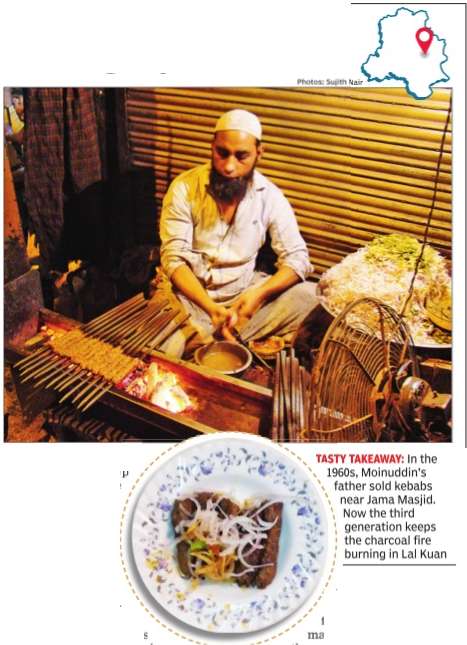
Sujith Nair
Old Delhi's king of kebabs For `seekhers' of skewered delights, all roads lead to Ustad Moinuddin's little shop in Lal Kuan The recipe for the best kebabs in Old Delhi is no secret. Ustad Moinuddin's shop in Lal Kuan is a must-stop for kebab lovers and its 62-yearold owner shares his recipe and technique with anyone who asks for it -but to replicate the mojo, one needs a large heart! As dusk sets in, sparks fly from burning charcoal, which turns minced meat wrapped around skewers into delicious seekh buff kebabs, and a crowd builds up close to the action. All of this happens on the single step that leads up to a shuttered meat shop in Qasimjan Gali, opposite Hamdard Dawakhana. The Chawri Bazaar Metro Station is a fiveminute walk from here.
Residents holding casseroles join others who wait patiently for their takeaway while some enjoy it sitting in the adjoining shop, Sangam Kebab Corner, which Moinuddin bought in 2004.The shop serves kebab for Rs 10 a piece, along with pudina chutney, onions and a dash of lemon.
It all began in the mid '60s, when Moinuddin moved to Delhi from Meerut to assist his father, who sold kebabs in t Jama Masjid's Chittli Kabar -for 10 paise a piece! By 1970, Moinuddin had gone solo and started selling kebabs in Kasabpura in Sadar Bazaar. In the early '80s, he moved to Lal Kuan.
A few years later, a portion of Moinuddin's index and middle fingers on the right hand had to be amputated following an accident while mincing meat in a machine. But that didn't deter him from weaving his magic around the skewer. There are quite a few buff tikka sellers near by, but Moinuddin's shop draws most of the evening crowd. As to what makes his kebabs such a crowdpuller, he simply says he has no greed, and that God has given him enough in life.
Despite ill-health, he keeps a hawk's eye on preparations at his home in Seelampur. He inspects the meat -around 45kg -that comes from a local butcher by noon.A small portion is kept aside for his second son, who sells kebabs in Seelampur.
Spices are sourced from Khari Baoli and asala prepared at a mill there. The rest of the prepara tion -mincing of meat with masala, onion and salt -happens at home.
Lal Mahal
The 13th-century Lal Mahal (Red/ Ruby Palace) in the Nizamuddin area, is one of the oldest Islamic palaces of India, is located in the ‘prohibited zone’ of four centrally protected monuments— Nizamuddin Baoli, Barakhamba, Chausath Khamba and Mirza Ghalib’s tomb. It is not an ASI-protected site. In 2013 construction activities took place around it.
Laxmi Nagar
A constitutional profile
2020
Vibha Sharma , January 18, 2020: The Times of India
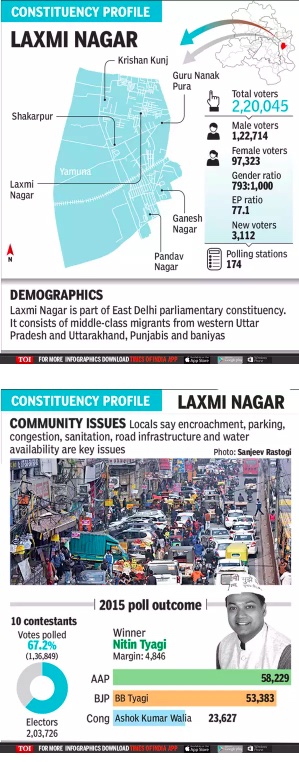
From: Vibha Sharma , January 18, 2020: The Times of India
NEW DELHI: Laxmi Nagar has an unenviable image. It not only has perhaps the highest population density in Delhi, but it also struggles with a multiplicity of urban woes — unregulated constructions, massive encroachment, unchecked commercialisation, deplorable sanitation and inadequate infrastructure. Walk around in Ganesh Nagar, Pandav Nagar, Laxmi Nagar or Shakarpur and you will find electricity wires dangling dangerously overhead, a sight that sends a chilling warning of the disaster that could overtake the overcrowded, ill-appointed localities crammed with humanity.
Lalita Park is the same neighbourhood where a building collapse killed 70 people in 2010. Though the government had promised to retrofit the numerous unsafe buildings, little has been done to address the problem, said a resident. Aniruddh Kumar, who lives in Shakarpur, added, “It is not just Lalita Park, the entire Laxmi Nagar constituency suffers the bane of illegal construction. Some demolitions were carried last year on Mangal Bazaar Road, but things remain the same elsewhere.” Lack of parking space is an additional problem. The colony roads are too narrow for parking, so people leave their vehicles on the main or service roads.
Lotus Temple
